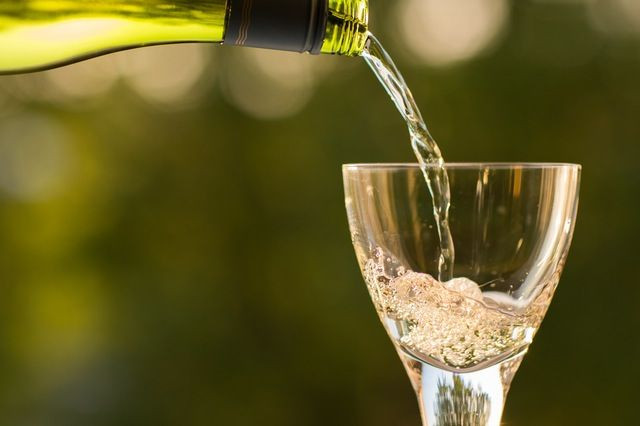Does Size Matter? Larger Wine Glasses May Increase Alcohol Consumption Without You Realizing

Most of us have been in this situation: We're out bar hopping with friends, ready for the next round, but we already have a full glass in hand. We can blame it on our refined college skill to devour copious amounts of alcohol in a short amount of time, but researchers suggest we shouldn't put the blame on ourselves — completely. According to a recent study published in the journal BMC Public Health, larger glasses change our perception, specifically when it comes to wine, leading us to drink faster and order more.
Previous research has found a correlation between the size, shape, and color of a wine glass and how much alcohol is consumed. For example, when we serve our own wine, how much we pour is influenced by these environmental factors. In regards to white wine, we pour nine percent more than if it were red, because it is harder to see. We tend to pour up to 12 percent more into wide red wine glasses than narrow white wine glasses. Meanwhile, we pour up to 12 percent more if we're holding our wine glass in our hands versus pouring into a glass set on a table.
However, how does our drinking behavior change when a bartender pours us wine versus self-serving wine at a restaurant?
In an effort to explore portion size and alcohol consumption, researchers from the University of Cambridge's Behavior and Health Research Unit (BHRU) decided to play some “dirty tricks” on patrons of the Pint Shop in Cambridge, from mid-March to early July 2015. The establishment has separate bar and restaurant areas, both selling food and drink. Wine in 125 milliliter (ml) or 175ml servings could be purchased by the glass, which is usually a 300ml size. By the bottle, the standard size is 750ml, while in a carafe, it’s 500ml or 1000ml.
Three similarly shaped wine glasses that varied in sizes between 250ml, 300ml, and 370 ml were used in the shop for eight straight nights. The researchers then analyzed sales data to see how the size of a wine glass affected how much patrons drank. The findings revealed wine sales went up 9.4 percent when wine was served in larger glasses, compared to standard-size. This increase was more pronounced in the bar area, at 14.4 percent, than an 8.2 percent increase in the restaurant area, where most glasses are poured by customers from bottles.
“We found that increasing the size of wine glasses, even without increasing the amount of wine, leads people to drink more,” said Dr. Rachel Pechey, study co-author the BHRU at Cambridge, in a statement.
Although it remains unclear why this is the case, researchers speculate larger glasses could lead us to perceive there’s less wine in a glass, causing us to drink faster and order more. People may order more wine because they believe they got less than a full glass when served larger glasses. Pechey notes: “But it’s interesting that we didn’t see the opposite effect when we switched to smaller wine glasses.”
In other words, smaller wine glasses did not encourage people to drink less.
A similar 2015 study found our beer glass shape could influence how drunk we are likely to get. The findings revealed bars using straight-sided glasses reported less alcohol consumption than drinking from curved glasses. This is because we’re more likely to misjudge the halfway point in curved glasses.
These studies have public health implications, suggesting being mindful of glass shape, size, and volume can possibly help curb binge drinking and lead heavy drinkers to consume alcohol at a slower pace. In the U.S., binge drinking is the most common pattern of excessive alcohol use, says the National Institute on Alcohol Abuse and Alcoholism. Binge drinking is defined as a pattern of drinking that brings your blood alcohol concentration (BAC) to 0.08g/dL or more. This happens in men when they’ve had five or more drinks, and in women when they’ve had four or more drinks in a span of two hours.
Alcohol consumption is a risk factor in major public health problems like Type 2 diabetes, cancer and liver disease, so “glass size might be an effective target for intervention,” according to the researchers. They also believe the findings could prompt maximum glass sizes to become a condition of alcohol licenses in the future.
So, avoiding the use of larger wine glasses could potentially curb binge drinking, and even prevent the onset of several diseases.
Source: Pechey R, Couturier DL, Hollands GJ et al. Does wine glass size influence sales for on-site consumption? A multiple treatment reversal design. BMC Public Health. 2016.
Published by Medicaldaily.com



























